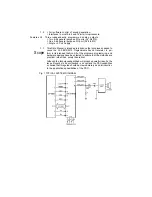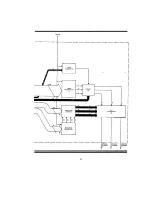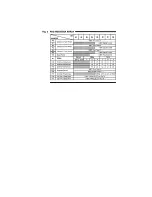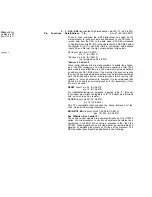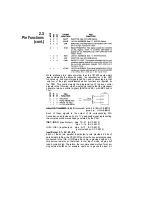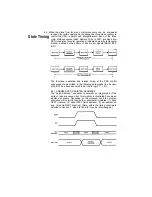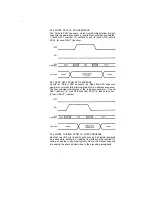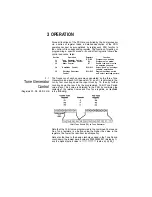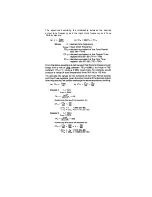
1 INTRODUCTION
It is apparent that any microprocessor is capable of producing
acceptable sounds with only a transducer if the processor has no
other tasks to perform while the sound is sustained. In real world
microprocessor use, however, video games need refreshing, key-
boards need scanning, etc. For example, in order to produce a single
channel of ninth octave C (8372 Hz) the signal needs attention every
sixty microseconds. Software required to produce this simple effect
and still perform other activities would in the least be very complex if
not impossible. In the extreme, random noise requires periodic atten-
tion even more frequently.
This need for software-produced sounds without the constant
attention of the processor is now satisfied with the availability of the
General Instrument AY-3-8910 and AY-3-8912 Programmable Sound
Generators.
1.1
Description
The AY-3-8910/8912 Programmable Sound Generator (PSG) is a
Large Scale Integrated Circuit which can produce a wide variety of
complex sounds under software control. The AY-3-8910/8912 is
manufactured in Gl’s N-Channel Ion Implant Process. Operation
requires a single 5V power supply, a TTL compatible clock, and a
microprocessor controller such as the GI 16-bit CP1600/1610 or one
of Gl’s PIC 1650 series of b-bit microcomputers.
The PSG is easily interfaced to any bus oriented system. Its flexibility
makes it useful in applications such as music synthesis, sound
effects generation, audible alarms, tonesignalling and FSK modems.
The analog sound outputs can each provide 4 bits of logarithmic
digital to analog conversion, greatly enhancing the dynamic range of
the sounds produced.
In order to perform sound effects while allowing the processor to
continue its other tasks, the PSG can continue to produce sound
after the initial commands have been given by the control processor.
The fact that realistic sound production often involves more than one
effect is satisfied by the three independently controllable channels
available in the PSG.
All of the circuit control signals are digital in nature and intended to
be provided directly by a microprocessor/microcomputer. This
means that one PSG can produce the full range of required sounds
with no change in external circuitry. Since the frequency responseof
the PSG ranges from sub-audible at its lowest frequency to post-
audible at its highest frequency, there are few sounds which are
beyond reproduction with only the simplest electrical connections.
Since most applications of a microprocessor/PSG system would also
require interfacing between the outside world and the microproces-
sor, this facility has been designed into the PSG. The AY-3-8910 has
two general purpose 8-bit I/O ports and is supplied in a 40 lead
package; the AY-3-8912 has one port and 28 leads.
Summary of Contents for ay-3-8910
Page 2: ...AY 3 8910 8912 PROGRAMMABLE SOUND GENERATOR DATA MANUAL...
Page 7: ......
Page 8: ......
Page 10: ......
Page 26: ......
Page 35: ...4 6 Interfacing to the PIC 1650 Cont...
Page 36: ...Fig 19 PIC 1650 AY 3 6910 SYSTEM EXAMPLE...
Page 38: ...Fig 20 CP1600 1610 AY 3 8910 INTERFACE...
Page 40: ...Fig 21 M6800 AY 3 8910 INTERFACE...
Page 42: ......
Page 44: ......
Page 52: ...7 ELECTRICAL SPECIFICATIONS...
Page 54: ...7 ELECTRICAL SPECIFICATIONS...
Page 55: ......
Page 56: ......





